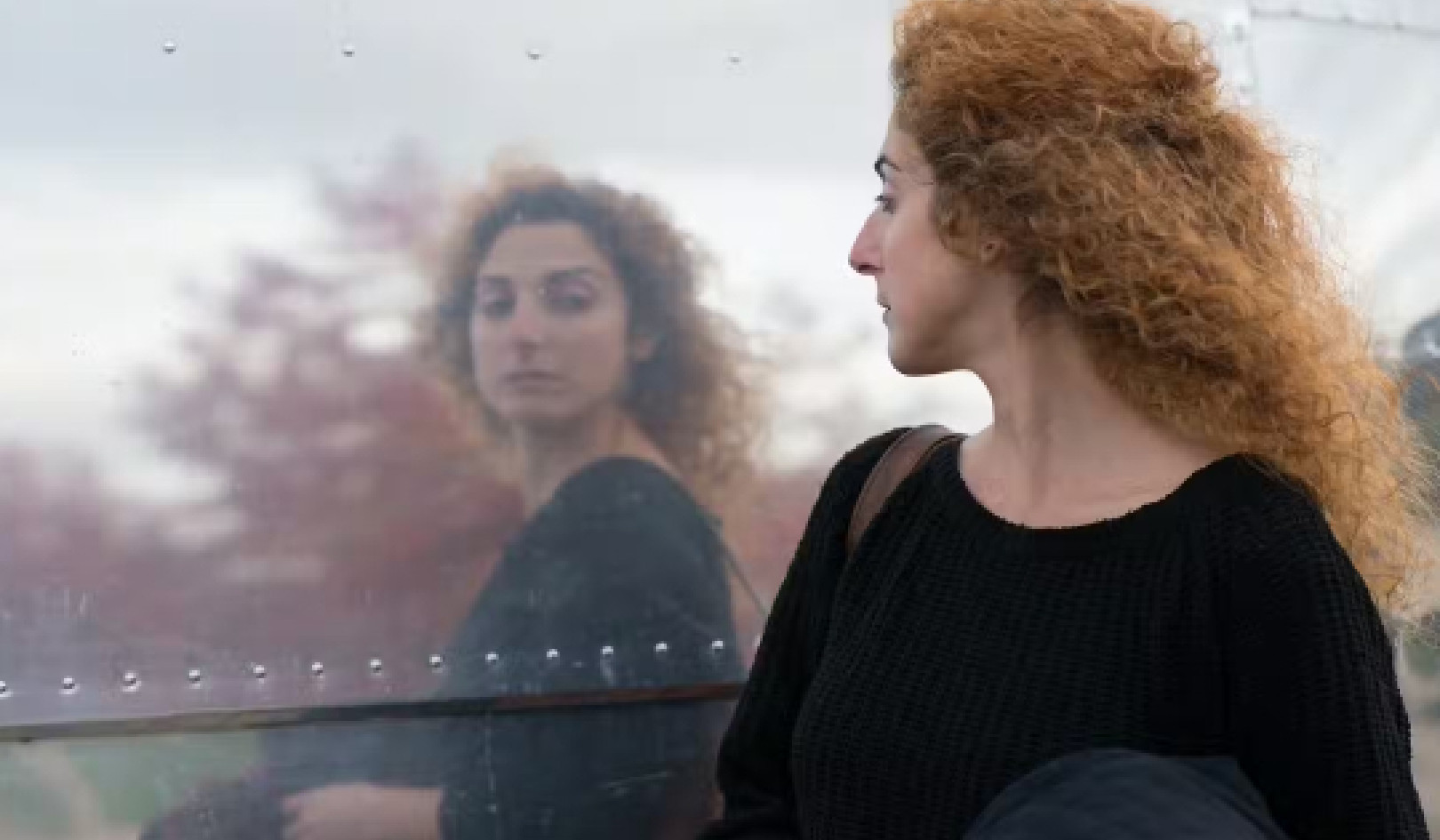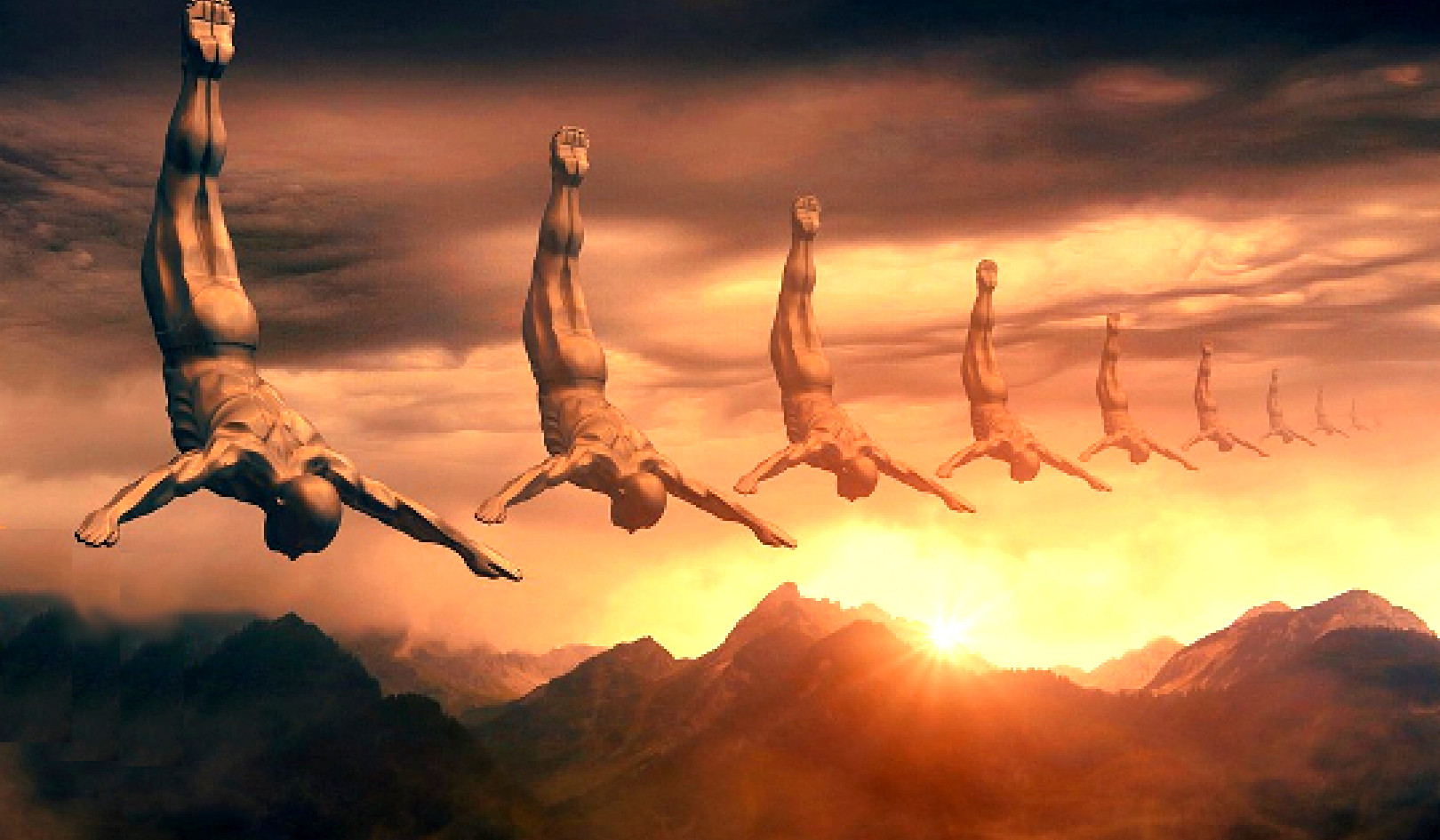
Just as our civilization is in a transition between stories, so also are many of us individually. When we look at the various stories we tell ourselves about our lives, certain patterns become apparent, and it may be possible to discern in these patterns two (or possibly more) dominant themes. One might represent the “old story” of one’s life, and the other the “new story.” The first is often associated with various wounds one is born into or has grown into as a member of this culture. The second story represents where one is going, and is consistent with the healing of these wounds.
Here is a process called “What’s true?” that is designed, first, to bring resident stories that lurk invisibly inside us into our field of awareness so as to depotentiate them, and second, through the mantra “What’s true?” to bring the story-bearer into the space between stories, the space where truth is available.
The process originated in a retreat I co-led with the marvelous social inventor Bill Kauth in 2010, and has evolved considerably since then. I will present here a fairly original version of it that the reader can adapt to her own teaching and practice.
The "What's True?" Process
First, everyone present identifies a situation or choice they are facing, a doubt, an uncertainty—something about which you “don’t know what to think” or “don’t know how to decide.” On a piece of paper, describe the bare facts of the situation, and then write down two separate interpretations of it entitled “Story #1” and “Story #2.” These stories describe what the situation means, the what-ifs around it, what it says about the people involved.
Here is an example of my own. When I finished the first draft of The Ascent of Humanity I began looking for a publisher. Enamored with the beauty and depth of this book that I’d spent so many years writing, it was with high hopes that I sent appropriate pitch packets to various publishers and agents. I’m sure you can guess what happened. Not a single publisher showed the remotest bit of interest. No agent wanted to take it on. How could anyone fail to be seduced by (what I saw as) the profundity of the book’s thesis and the beauty of the excerpts? Well, I had two explanations that inhabited me concurrently, waxing and waning in their relative influence.
Story #1 was as follows: “Face it, Charles, the reason they are rejecting the book is simply that it isn’t very good. Who are you to attempt such an ambitious meta-historical narrative? You don’t have a PhD in any of the fields you write about. You are an amateur, a dilettante. The reason your insights are not in the books you’ve read is that they are too trivial and childish for anyone to bother publishing them. Perhaps you should go back to graduate school, pay your dues, and someday be qualified to make a modest contribution to the civilization that you, in your sophomoric rebelliousness, so conveniently reject. It isn’t our society that is all wrong, it is that you just can’t quite cut it.”
And here was Story #2: “The reason that they are rejecting the book is that it is so original and unique that they do not have a category to put it in, nor even eyes to see it. It is to be expected that a book so deeply challenging to the defining ideology of our civilization would be rejected by the institutions built upon that ideology. Only a generalist, coming from outside any established discipline, could write such a book; your lack of a legitimate place in the power structure of our society is what makes the book possible and, at the same time, what makes quick acceptance so elusive.”
There are several features of these stories worthy of note. First, one cannot distinguish between them on the basis of reason or evidence. Both fit the facts. Second, it is quite obvious that neither story is an emotionally neutral intellectual construct; each is connected not only to an emotional state, but also to a life story and a constellation of beliefs about the world. Third, each story quite naturally gives rise to a different course of action. That is to be expected: stories contain roles, and the stories we tell ourselves about our lives prescribe the roles that we ourselves play.
After each person has written down a situation and two stories about it, everyone assembles into pairs. Each pair has a speaker and a questioner. The speaker describes what he or she has written, ideally taking just a minute or two to do so. It only takes that long to convey the essentials of most stories.
The listener, facing the speaker, then asks, “What’s true?” The speaker responds by speaking whatever feels true in the deep listening attention of the questioner. She might say, “Story #1 is true” or “Story #2 is true,” or she might say, “Actually, I think what is true is this third thing …” or “What’s true is that I wish I could believe Story #2, but I am afraid the first story is true.”
After the response, the questioner follows up with “What else is true?” or, if the answer was just more story, perhaps with “Yes, and what is true?” Other useful questions are “If that is true, what else is true?” and “What’s true right now?” Another way to run the process is simply to repeat the initial question, “What’s true?” again and again.
This is a subtle, unpredictable, and highly intuitive process. The idea is to create a space into which the truth can emerge. It might happen right away, or it might take several minutes. At some point the speaker and the questioner will feel that the truth that wanted to come out has come out, at which point the questioner can say, “Are you complete for now?” The speaker will probably say yes, or perhaps might say, “Actually, there is one more thing …”
Often, the truth that comes out is about the speaker’s true feelings on the matter, or something she knows beyond doubt. When it comes out, there is a feeling of release, sometimes accompanied by a sigh-like exhalation of breath. Leading up to it, the speaker might go through a mini-crisis, an attempt at avoidance through intellectualizing the situation. The questioner’s job is to short-circuit this dissembling and return again and again to “What’s true?” When the hidden truth comes out, it is usually very obvious and often, paradoxically, somewhat surprising as well, something “right in front of my face that I couldn’t see.”
Some Examples of Truths
To give you a better flavor for what comes out of this process, here are some examples of truths that I have seen emerge:
“Who am I kidding—I’ve already made my choice! All this rationalization is just my way of giving myself permission.”
“You know, the truth is that I just don’t care anymore. I’ve been telling myself I should care, but honestly, I just don’t.”
“The truth is, I’m just afraid of what people will think.”
“The truth is, I’m using fear of losing my savings as a cover for what I’ve really been afraid of: that I’m wasting my life.”
If the speaker keeps dancing around the truth, the questioner, if he can see it, might make an offering along the lines of “Is it true that …”
The main “technology” in this process is what some people call “holding space.” The truth comes as a gift, welling up through the cracks between our stories. It is not something we can figure out; it comes, rather, in spite of our attempts to figure it out. It is a revelation. To hold space for it might require a lot of patience, even fortitude, as the stories and their attendant emotions seek to draw us in.
Once the truth has come out, there is nothing else to do. The process is finished, and after a moment of silence, speaker and questioner switch roles.
Some processes like these encourage the speaker to make some kind of declaration or commitment based on the truth she has discovered. I advise against it. The truth exercises its own power. After having these realizations, actions that had once seemed inconceivable become matter-of-course; situations that had been hopelessly murky become crystal clear; anguished internal debates fade away by themselves, without any struggle to let go of them. The “What’s true?” process brings something new into the field of attention and therefore into our selves. Indeed, another question lurks behind that of “What’s true?” That other question is “Who am I?”
The same holds for those experiences of nature, death, loss, silence, and so on. The truth they bring changes us, loosens the hold of story. Nothing needs to be done, yet much doing will happen.
From Our Stories Back to Truth
I have noticed that life itself conducts a kind of “What’s true?” dialogue with each one of us. Experiences intrude upon whatever story we inhabit, bringing us out of story and back to truth, and inviting us to rediscover parts of ourselves that our story had left out. And life is relentless in its questioning.
What life does to us, we, as part of others’ lives, can do for them, both on a personal level, and on the level of social, spiritual, and political activism. On a personal level, we can decline the frequent invitations we get to partake in the dramas people create that reinforce a story of blame, judgment, resentment, superiority, and so on.
A friend calls to complain about her ex. “And then, he had the nerve to just sit in the car waiting for me to trot out and bring him his briefcase.” You are supposed to join in condemnation and affirm the story of “Isn’t he awful and aren’t you good.” Instead you might play “What’s true?” (in disguised form), perhaps simply by naming and giving attention to the feeling. Your friend might be annoyed with you for refusing to join her story; sometimes this will be seen as betrayal, just as any refusal to hate is. In fact you may notice that in leaving a story behind, you may also leave behind the friends that inhabited it with you. This is another reason for the loneliness that is such a defining feature of the space between stories.
The journey out of the old normal into the new has for many of us been a lonely journey. Internal and external voices told us we were crazy, irresponsible, impractical, naive. We were like swimmers struggling through choppy seas, getting only an occasional desperate breath of air enough to allow us to keep swimming. The air is the truth. Now we are alone no longer. We have each other to hold each other up. I certainly didn’t emerge from the self-doubt around my book by dint of some heroic personal effort, courage, or fortitude. I stand in a new story, to the extent that I do, thanks to crucial help at key moments. My friends and allies hold me there when I am weak, as I hold them when I am strong.
Without support, even if you have an experience of universal oneness, once you return back to your life, your job, your marriage, your relationships, these old structures tend to pull you back into conformity with them.
Belief Is A Social Phenomenon
With rare exceptions, we cannot hold our beliefs without reinforcement from people around us. Beliefs that deviate substantially from the general social consensus are especially hard to maintain, requiring usually some kind of sanctuary such as a cult, in which the deviant belief receives constant affirmation, and interaction with the rest of society is limited. But the same might be said for various spiritual groups, intentional communities, and even conferences like the ones I speak at. They provide a kind of incubator for the fragile, nascent beliefs of the new story to develop. There they can grow a bed of roots to sustain them from the onslaughts of the inclement climate of belief outside.
To discover such an incubator might take time. Someone recently exiting a conventional worldview may feel alone in her rejection of it. New beliefs well up within her, that she recognizes as ancient friends, intuitions from childhood, but without an articulation of those beliefs by someone else, those beliefs cannot stabilize. This again is why it is so important to have preachers to the choir so that she can hear the choir’s loud singing. Sometimes one receives a totally new piece of the Story of Interbeing that no one has articulated yet, for which there is not yet a preacher nor a choir. But even then there are kindred spirits awaiting, more and more of us, as the new story reaches critical mass.
That is happening in our time. True, the institutions built on Separation appear bigger and stronger than ever, but their foundation has crumbled. Fewer and fewer people really believe in the reigning ideologies of our system and their assignation of value, meaning, and importance. Whole organizations adopt policies that, in private, not a single one of their members agrees with. To use a hackneyed analogy, a mere month before the Berlin Wall was dismantled, no serious observer predicted such a thing could happen anytime soon. Look how powerful the Stasi is! But the substructure of people’s perceptions had been long eroding.
And so is ours. The new story is reaching critical mass. But has it reached it? Will it reach it? Perhaps not quite yet. Perhaps it is just at a tipping point, a moment of equipoise. Perhaps it needs just the weight of one more person taking one more step into interbeing to swing the balance. Perhaps that person is you.
Reprinted with permission.
Article Source
Excerpted from Chapter 33 of:
The More Beautiful World Our Hearts Know Is Possible
by Charles Eisenstein
 In a time of social and ecological crisis, what can we as individuals do to make the world a better place? This inspirational and thought-provoking book serves as an empowering antidote to the cynicism, frustration, paralysis, and overwhelm so many of us are feeling, replacing it with a grounding reminder of what’s true: we are all connected, and our small, personal choices bear unsuspected transformational power. By fully embracing and practicing this principle of interconnectedness—called interbeing—we become more effective agents of change and have a stronger positive influence on the world.
In a time of social and ecological crisis, what can we as individuals do to make the world a better place? This inspirational and thought-provoking book serves as an empowering antidote to the cynicism, frustration, paralysis, and overwhelm so many of us are feeling, replacing it with a grounding reminder of what’s true: we are all connected, and our small, personal choices bear unsuspected transformational power. By fully embracing and practicing this principle of interconnectedness—called interbeing—we become more effective agents of change and have a stronger positive influence on the world.
Click here for more info and/or to order this book.
About the Author
 Charles Eisenstein is a speaker and writer focusing on themes of civilization, consciousness, money, and human cultural evolution. His viral short films and essays online have established him as a genre-defying social philosopher and countercultural intellectual. Charles graduated from Yale University in 1989 with a degree in Mathematics and Philosophy and spent the next ten years as a Chinese–English translator. He is the author of several books, including Sacred Economics and Ascent of Humanity. Visit his website at charleseisenstein.net
Charles Eisenstein is a speaker and writer focusing on themes of civilization, consciousness, money, and human cultural evolution. His viral short films and essays online have established him as a genre-defying social philosopher and countercultural intellectual. Charles graduated from Yale University in 1989 with a degree in Mathematics and Philosophy and spent the next ten years as a Chinese–English translator. He is the author of several books, including Sacred Economics and Ascent of Humanity. Visit his website at charleseisenstein.net
Video with Charles: The Story of Interbeing
{youtube}https://youtu.be/Dx4vfXQ9WLo{/youtube}




























